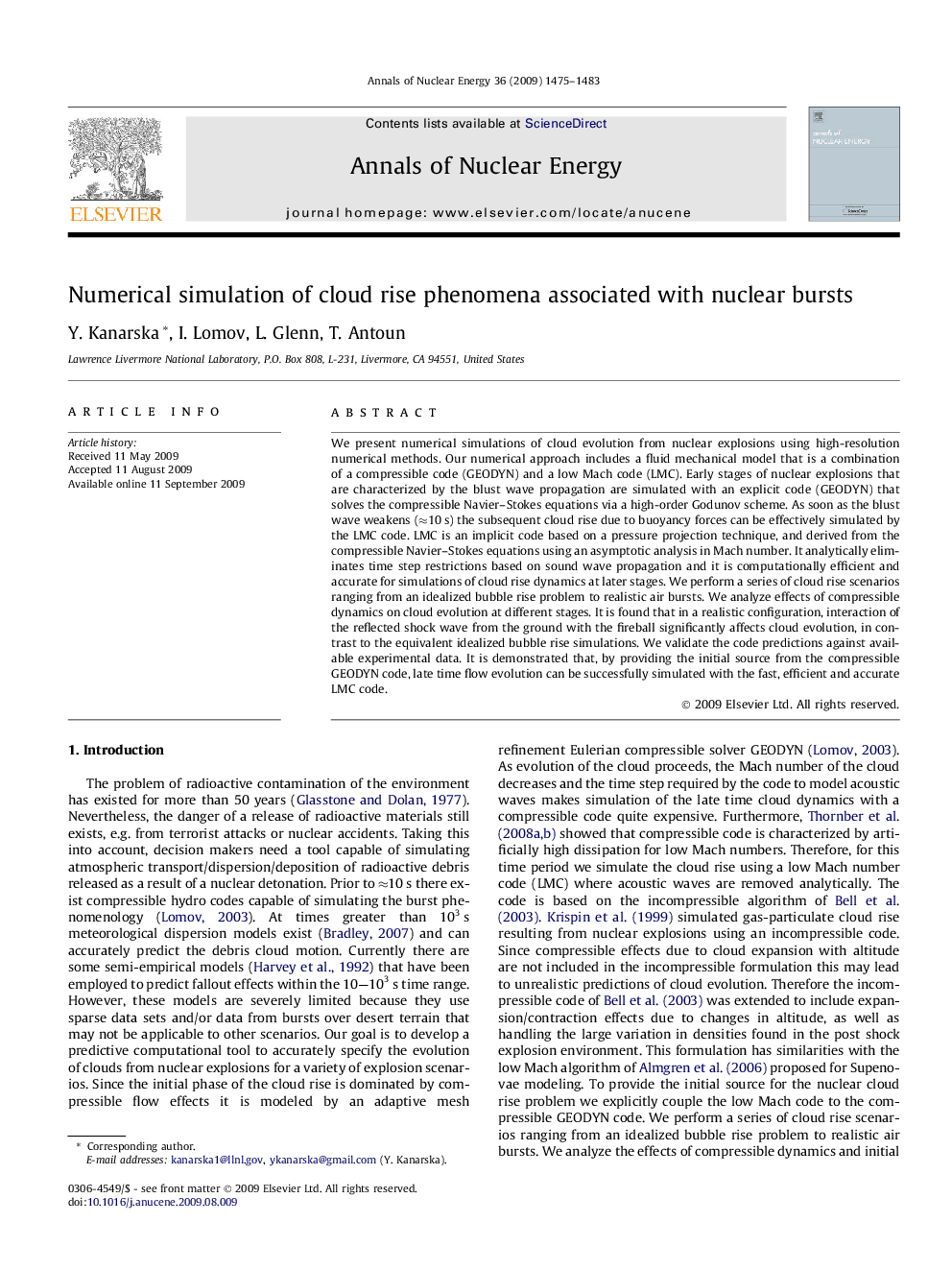| Article ID | Journal | Published Year | Pages | File Type |
|---|---|---|---|---|
| 1729649 | Annals of Nuclear Energy | 2009 | 9 Pages |
We present numerical simulations of cloud evolution from nuclear explosions using high-resolution numerical methods. Our numerical approach includes a fluid mechanical model that is a combination of a compressible code (GEODYN) and a low Mach code (LMC). Early stages of nuclear explosions that are characterized by the blust wave propagation are simulated with an explicit code (GEODYN) that solves the compressible Navier–Stokes equations via a high-order Godunov scheme. As soon as the blust wave weakens (≈10 s) the subsequent cloud rise due to buoyancy forces can be effectively simulated by the LMC code. LMC is an implicit code based on a pressure projection technique, and derived from the compressible Navier–Stokes equations using an asymptotic analysis in Mach number. It analytically eliminates time step restrictions based on sound wave propagation and it is computationally efficient and accurate for simulations of cloud rise dynamics at later stages. We perform a series of cloud rise scenarios ranging from an idealized bubble rise problem to realistic air bursts. We analyze effects of compressible dynamics on cloud evolution at different stages. It is found that in a realistic configuration, interaction of the reflected shock wave from the ground with the fireball significantly affects cloud evolution, in contrast to the equivalent idealized bubble rise simulations. We validate the code predictions against available experimental data. It is demonstrated that, by providing the initial source from the compressible GEODYN code, late time flow evolution can be successfully simulated with the fast, efficient and accurate LMC code.
